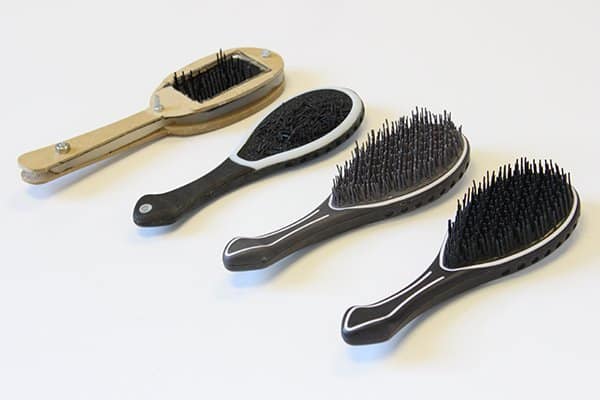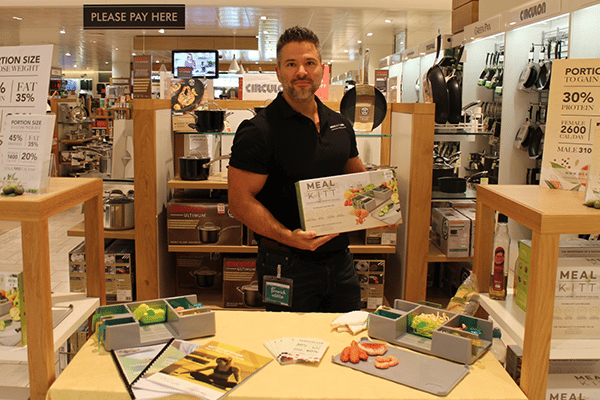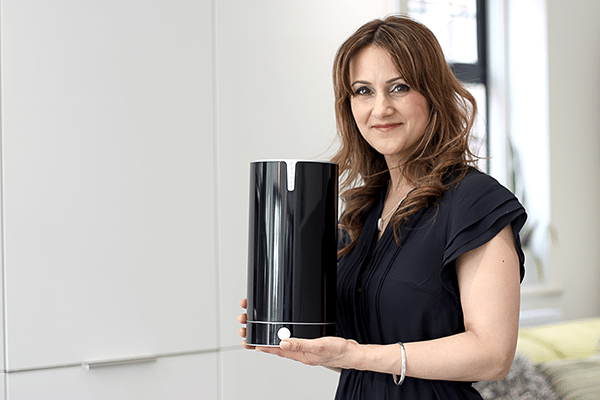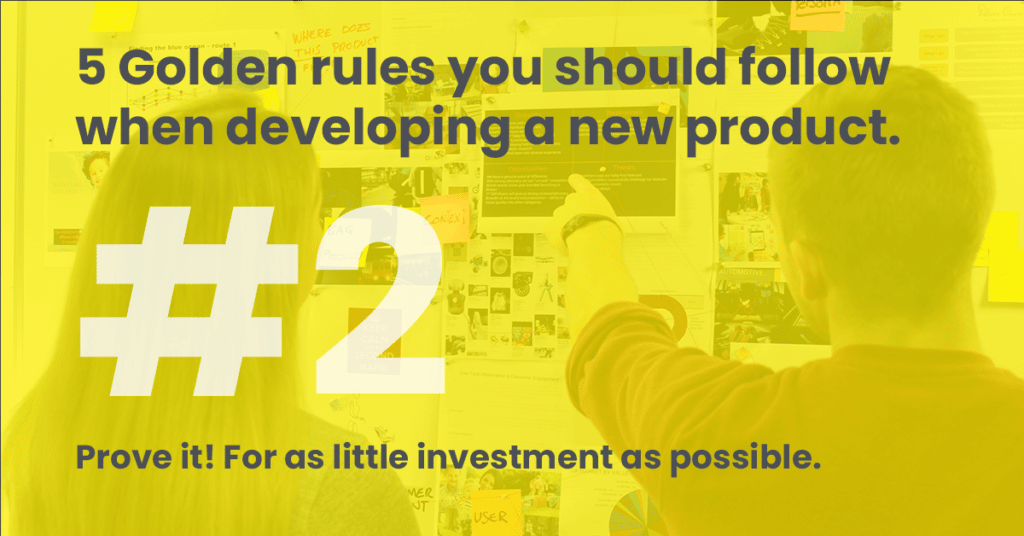
Hi I’m Phil, I founded D2M Innovation just over 10 years ago! I hope you enjoy reading this article. To have my team develop your project, fill in this contact form…
Rule 2: Prove it - for as little investment as possible
It’s week 2 of the ‘Golden Rules of Innovation’ blog series!
Today I’ll be telling you why you should always prove it! Prove that your products work for as little investment as possible. You need to prove your product with technical work and documentation. You need to prove that the numbers add up, that it is commercially viable and that there is a market for it! I will provide some examples to demonstrate this.
Firstly, let’s look at someone who didn’t do this. But I warn you now… This is a sad story.
We had a client come to us with a design for a pull-along wagon. It had an amazing suspension system and a media agency had worked up these amazing animations showing how incredible this product was off-road. We were very impressed!
The client needed a prototype and this caused us some concern. It raises a lot of questions when someone already has a design and just needs us to prototype it. I always question why the person who designed it won’t prototype it themselves? And why were they commissioned to design it if they couldn’t prototype it? We won’t ever design anything that we can’t build ourselves. With 2500 sq. feet of workshops, tools, textiles and hard goods, we can assemble just about any consumer product prototype, even if certain parts are made by trusted suppliers.
Furthermore, the other problem with building someone else’s design is: what happens if it doesn’t work? Who is liable for that? What if we would have designed it differently? Do we re-design it or do we just go with what has been done already?
In this example, we were persuaded to not change the design, despite our obvious improvements. We were also told that we would have to re-design it later, but for now, we just needed to build the prototype to the current design. We questioned this heavily and discovered, after much probing, that the client had spent 7 years and £300,000 developing the current idea so really wanted to see this design work.
We were gob-smacked!
£300,000 and all they had was a CAD model and needed us to prototype it???
Apparently, they had been persuaded to make expensive tooling to produce the design before they had seen a prototype. It didn’t work. The client then had it re-designed by an automotive engineer and when we pointed out how it could be improved, unfortunately, they didn’t have the funds to do that; they only had funds for a prototype.
Well, we did manage to build it thanks to our expert team of senior designers, but as we had said, it needed major improvements. Unfortunately, they failed to raise further investment and the project died a death. We remain gutted for them.
The lesson to be learned here is to always prove it.

Build your design as cheaply as possible and see if it’s close to working. The most cost-effective way to produce a prototype is by taking parts off an existing product that is out there already.
We often build basic physical models for clients and then tell them to try it. Use it, test it, break it if necessary but see if it actually works. So many times, clients have changed direction significantly having had a working version they can test for themselves. Although they may not look visually appealing, they certainly prove the concept works – now you can start making it look prettier!
Once you’ve proved it works, then prove it can be made cost effectively. It’s best to know this now rather than later, after spending thousands before realising it’s just too expensive.
I want to share another case study with you today, about a client who had lots of ideas for new products and didn’t know where to start or which project to start with. We started by conducting a feasibility assessment of the different concepts which included:
- Development costs
- Time scales and how long it would take to get to market
- Potential returns
- Tooling costs
- Which project was least risky
- Which project was most likely to succeed (we started with that one!)
It is critical to look at the end of the development journey and to think about sales when you are at the beginning of the development journey. Way too many people get excited about materials, finishes, colour range, future products or proving the technical elements and with complete disregard of the commercials. We always start with the commercials and then work ‘backwards’ before any client pays any money. This is partly because we are desperate that your project brings a commercial return on your investment.
Why?
Because if it does, hopefully, you’ll come running back to us so we can design the upgraded version or the next product that you want to develop.


Long-term clients that we love working with and who can see exactly how much value we add from their rising bank balances!
So moving on, once we had analysed and chosen which project to proceed with, we cracked on with concept development, producing basic physical models. We then undertook some market research with his team and clients to ensure that the product was appealing to the intended target audience. We proved it technically worked, then we proved it could be made at the right cost and then we proved, as best we could, that it would sell!
All this work happens in the initial commercial feasibility stage. This stage often ends with a commercial viability piece of work that is critical. Unlike some design agencies which simply develop products for visualisation, D2M have vast experience developing products that go into manufacture. We can cost a product early on to provide you with budgetary numbers for manufacturing setup including tooling and the unit cost. This gives you a magic bullet. With these numbers, you can work out if the project is commercially viable before investing in expensive prototypes. This is the main way we manage your risk during the development of an innovative project.
Having successfully proven that the project had legs, we then developed CAD models, prototypes and started detailed discussions with the manufacturer. This is also key. Why wouldn’t you involve the engineers who will be responsible for designing the tooling and production process for your product?
Seems obvious right? But too often, designers sit in a little bubble disregarding the others involved in taking a product to market. So with this project, we completed the design, oversaw the first production run and then cracked open a bottle of bubbly when the first container of products arrived in the UK! Trust me, it’s a great moment – cracking open a container of the product that you originally thought up in the shower!
(Well that’s where I have my great ideas – I even have a waterproof notepad so that no more great ideas go down the drain!)
So there’s the second golden rule of innovation for you and a couple of true stories which show why you always should Prove It before moving on with any product development.
And now that you know the basics of this rule, we can expand on it:
- Prove it hasn’t been patented already (Patent Search)
- Prove it works (Technical Feasibility)
- Prove it can be made cost effectively (Commercial Viability)
- Prove that it will sell (Market Research & Focus Groups)
- Prove that you can protect it (Patentability Opinion)
Are you ready to start your innovation journey?
If you are ready to start your product development journey, why not submit your project for us to review? Or you can drop us an email: [email protected]
We endeavour to answer all enquiries within 48 hours on business days.
We’ll keep your idea entirely confidential under our NDA. My team will be happy to talk you through our process and to see if your project is something that we can help with!
